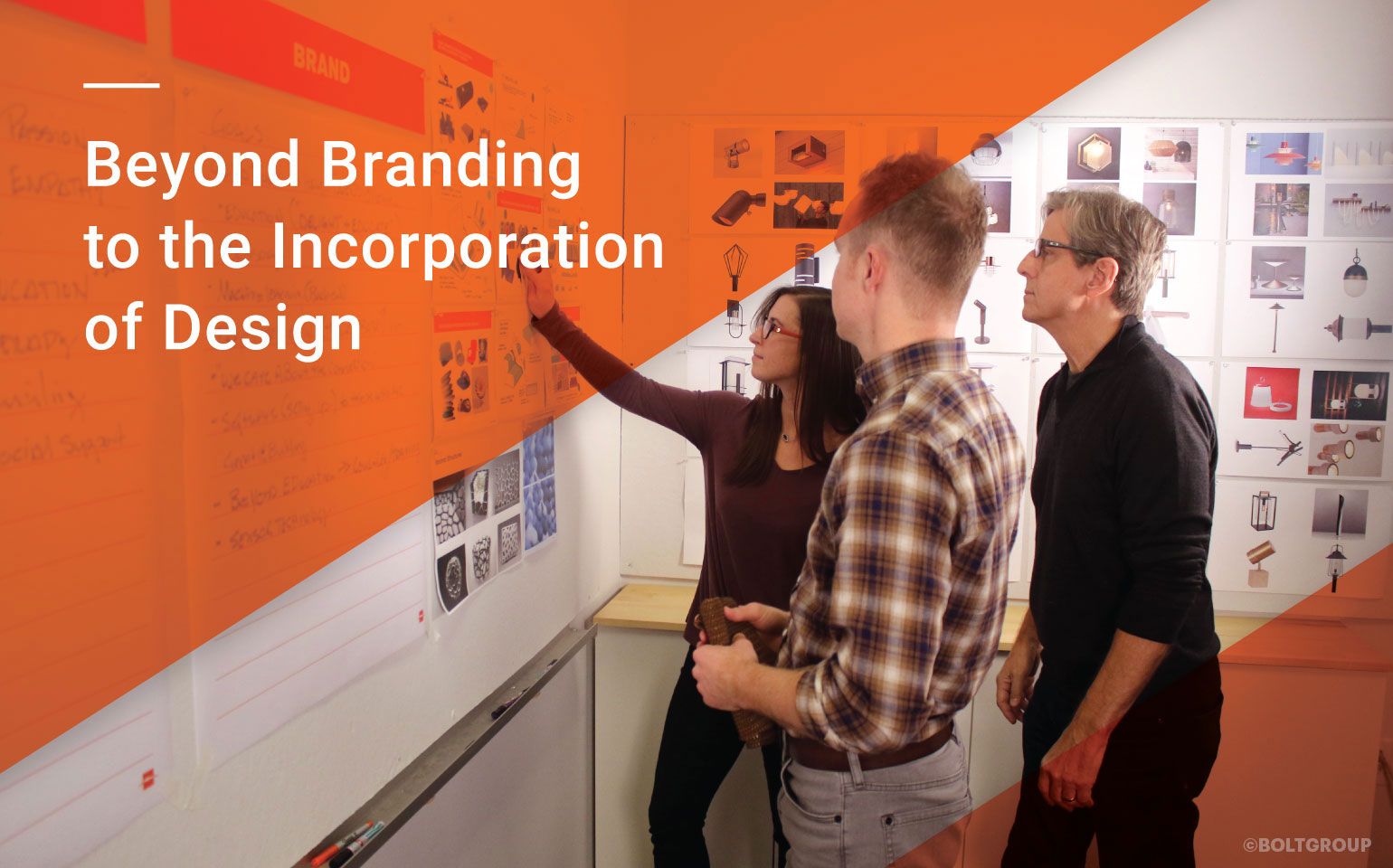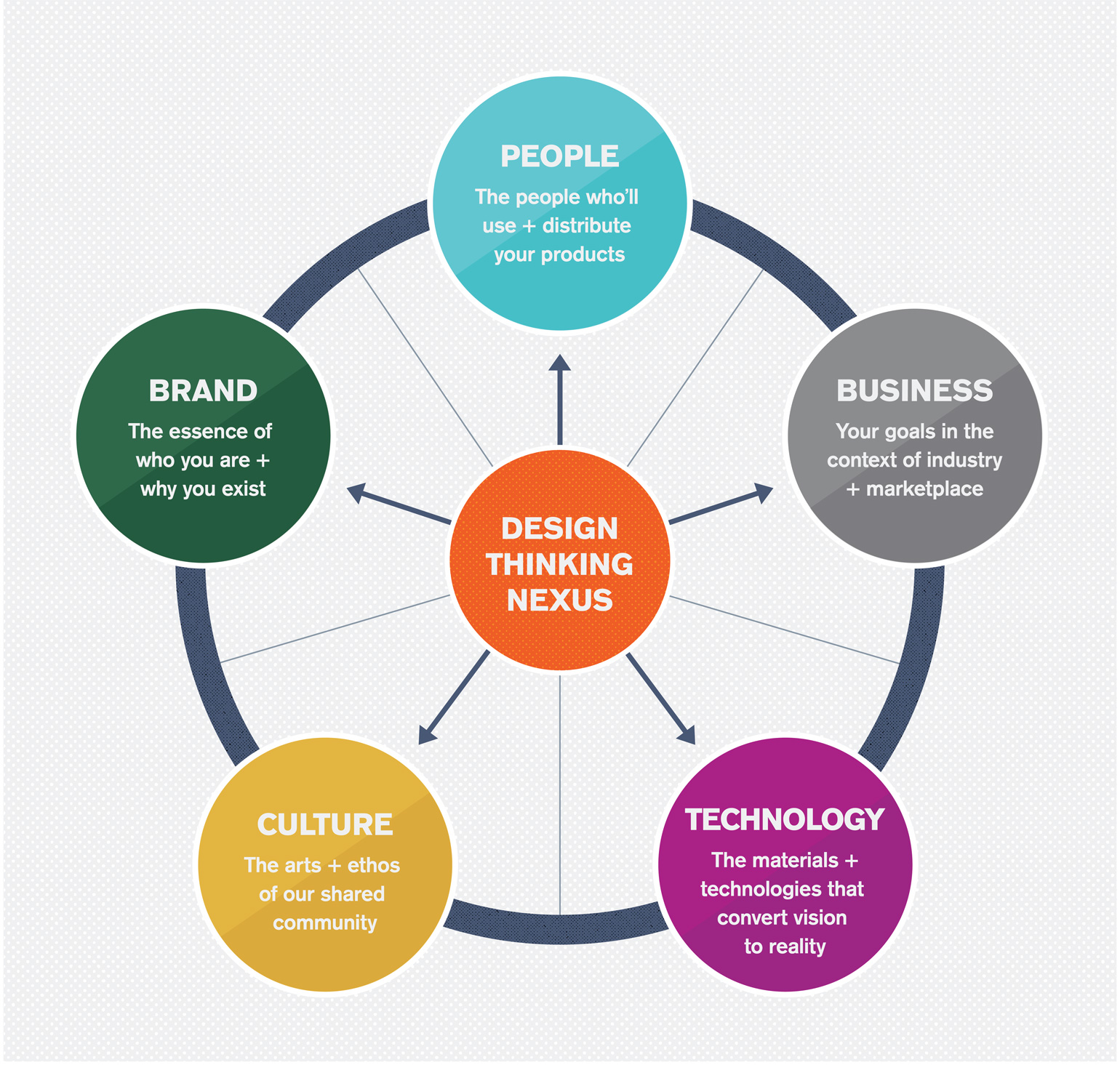When properly deployed, design can turn your brand—a misunderstood word in many parts of a business—into one of your highest performing assets. Design is moving to the core of many businesses and design thinking is taking over the MBA school curriculum. It’s important to acknowledge that when properly harnessed, design—as a discipline and a process—can flow through every department of your organization. The experiences created through intentional design solutions can and will improve communication and break down silos that create confusion, controversy, conflict, and internal competition. And we all know that eliminating those four “C” words from your business can translate into market success and profitability.
We call it the design thinking nexus. It’s the confluence of people, business, technology, culture, and brand. When all are considered through a lens of discipline and a process that focuses on empathy, insights, and craft, the result can be a design-driven fidelity of brand. Measured by truth, transparency, authenticity, simplicity, and clarity. This design-led approach to your brand—its meaning, the value it creates, and the preference it commands—forces integration and a single focus on what it takes for your brand to influence positive behavior toward your organization and its products and services.

